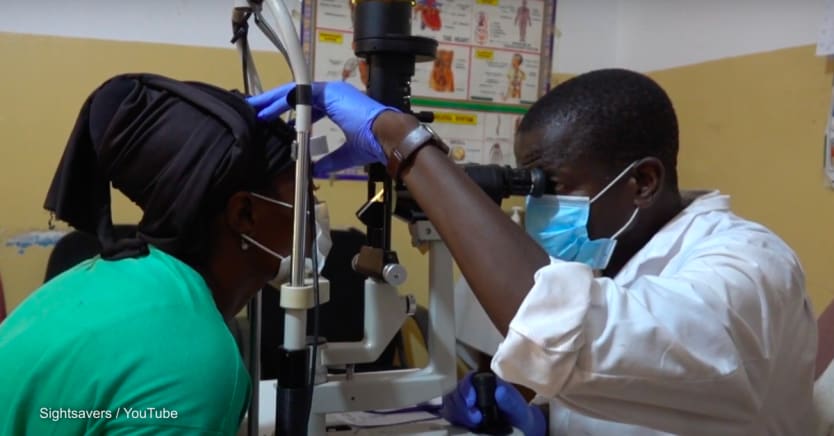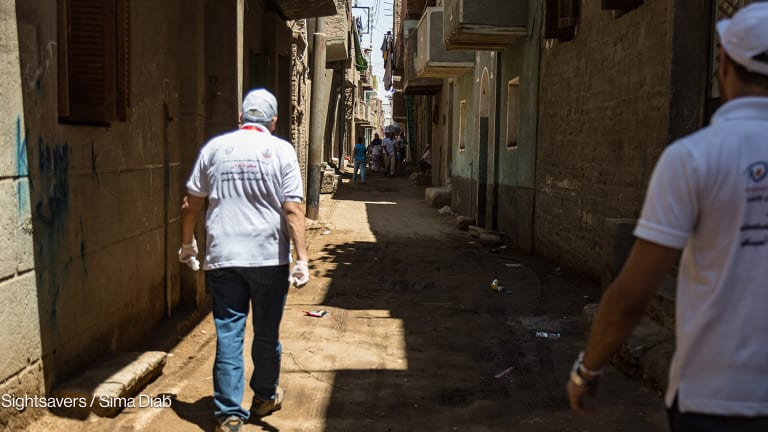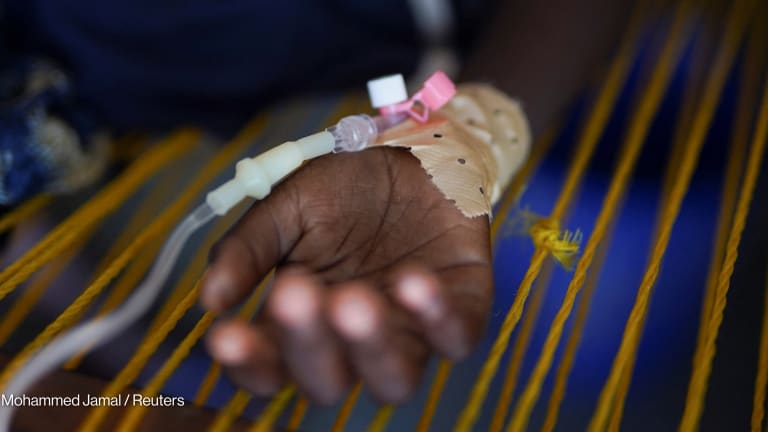
As Gambia becomes the latest country to eliminate trachoma, experts say there’s hope for worldwide eradication in the near future.
A painful eye disease that, if left untreated, can lead to irreversible blindness — trachoma is most common in children and spreads through personal contact and flies who have come into contact with an affected person. About 1.9 million people are thought to have been left visually impaired as a result of trachoma.
“I know it can be frustrating and it can take years or even decades to achieve goals, but then you do see countries reach the finish line and it’s inspiring to see success and you use that to keep moving forward,” said Angelia Sanders, associate director at The Carter Center’s Trachoma Control Program and chair of the International Coalition for Trachoma Control.
It remains a public health problem in 44 countries — including South Sudan, Brazil, and Pakistan — and disproportionately affects those living in rural and marginalized communities.
Elimination in Gambia, which was announced last month, shows that it can be achieved through hard work, commitment, and collaboration, said Balla Musa Joof, Sightsavers’ Gambia country director.
Before Gambia, Ghana, Myanmar, Mexico, Morocco, and Nepal were among 13 countries the World Health Organization most recently validated as having eliminated trachoma as a public health problem.
“There seems to be a synergistic effect in the communities where uptake of antibiotics is enhanced by good quality health education, community participation, and sanitation.”
— Robert Miyashiro, program officer, Conrad N. Hilton FoundationTrachoma is one of the neglected tropical diseases that WHO’s 2021–2030 road map for neglected tropical diseases aims “to prevent, control, eliminate or eradicate” by 2030, many more should follow suit in the coming years.
Devex asks how other countries can make progress and overcome the barriers in their way.
The road to worldwide elimination
Not only is elimination possible, but it has never been more possible than it is now, said Dr. Anthony Solomon, medical officer at the WHO’s department of control of NTDs. “If we fail to take advantage of the momentum that’s currently been built up behind the program, it’ll be very difficult to generate that again in our lifetimes,” told Devex.
While each context is different, there are a lot of useful experiences to glean from countries that have been successful thus far, Solomon added. He stressed the importance of implementing, as other countries have done, the WHO-recommended SAFE strategy. This consists of surgery to treat the blinding stage, antibiotics to clear the infection, facial cleanliness, and environmental improvement, including improving access to WASH.
Kwabena Boadu Oku-Afari, chief director of the Ghana Ministry of Health, previously attributed WASH as key to eliminating trachoma in the country in 2018. According to WHO, 4.2 billion people live without safely managed sanitation services and 3 billion lack access to basic handwashing facilities.
Ghana also included WASH indicators in its NTD Master Plan for 2016-2020 and, according to Oku-Afari, constructed 27,500 latrines, 3,500 boreholes, and hand-dug wells.
“There’s no way you can eliminate trachoma if you just focus on the surgeries or antibiotics,” Joof said. In fact, countries must have a plan to improve WASH access to access the antibiotic donation that Pfizer makes available through the International Trachoma Initiative, Solomon explained.
“It all works together,” said Robert Miyashiro, program officer at the Conrad N. Hilton Foundation — which has been supporting The Carter Center for over 20 years in its work controlling trachoma in Ethiopia, Mali, Niger, South Sudan, and Sudan. “There seems to be a synergistic effect in the communities where uptake of antibiotics is enhanced by good quality health education, community participation, and sanitation.”
In Gambia, Joof said the government previously encouraged general community cleaning one day a week, which contributed to tackling trachoma as well as other issues.
Aside from WASH efforts, lessons can also be learned from both Ghana and Gambia’s success in engaging the community and working cross-sectorally to ensure everyone was pushing in the same direction, Solomon explained.
“Community involvement is very key in identifying cases,” Joof said, highlighting the role of community volunteers in educating people about trachoma. In addition, he recommended other countries work with other partners and coordinate via a trachoma task force.
The barriers to progress
However, one stumbling block standing in the way of elimination is program funding.
More on WASH:
► Opinion: How to ensure WASH services in all health care facilities
► WASH inclusion in new NTD roadmap signals 'a paradigm shift'
► Robots, drones, and AI: The new technology making waves in WASH
Jeopardized by COVID-19-related budget constraints, this could set progress back, Miyashiro warned. For example, the United Kingdom’s Foreign, Commonwealth & Development Office’s aid cuts are likely to affect trachoma programs, he said. “There is a need to make sure these programs are funded fully so they can reach those targets or we won’t make it,” he added.
The Global Trachoma Mapping Project is one such project that needs funding, Sanders said. However, its funding timeframe ended in 2016 before all countries could complete their mapping of trachoma prevalence.
“We have places in Darfur, Sudan, a lot of areas within South Sudan, places in Democratic Republic of Congo, and Central African Republic that we suspect have trachoma but we need funding in order to do surveys,” Sanders said. “You can’t fight something until you know how bad it is so it is really important that we complete the map.”
While other diseases may better grab the headlines, trachoma’s gains are within reach, Miyashiro said. “There is an endpoint, and if that’s made clear, I think that it may become more appealing to other donors who might be looking for something that’s a little bit more winnable.”
Visit the WASH Works series for more coverage on water, sanitation, and hygiene — and importantly, how WASH efforts intersect with other development challenges. You can join the conversation using the hashtag #WASHWorks.









